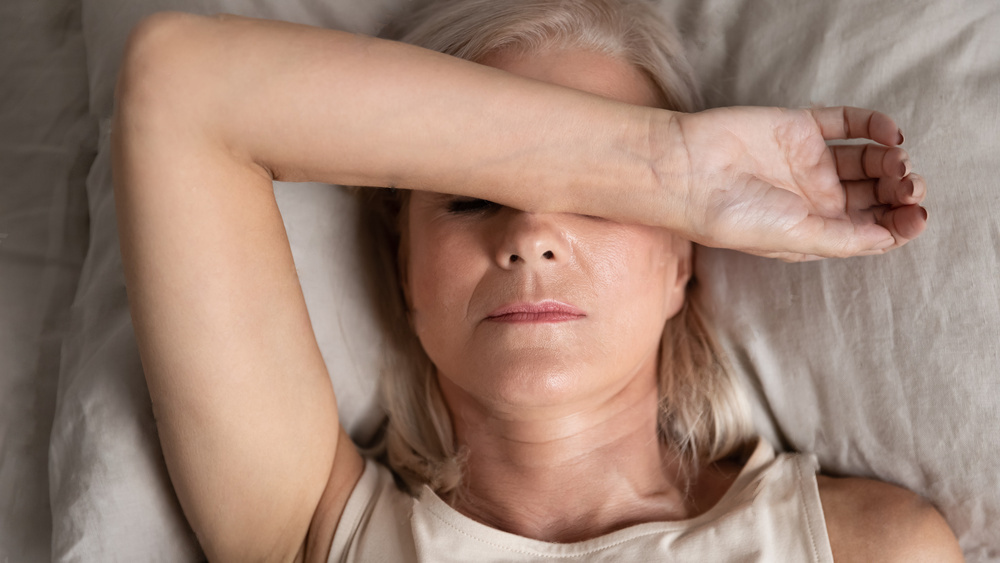Fluctuating hormones. Completely new physical experiences. Changes to your mood, mental health, and emotional sense of self. In the midst of menopause...
 Fluctuating hormones. Completely new physical experiences. Changes to your mood, mental health, and emotional sense of self. In the midst of menopause’s many changes, what kind of tools can you reach for to find a sense of balance?
Fluctuating hormones. Completely new physical experiences. Changes to your mood, mental health, and emotional sense of self. In the midst of menopause’s many changes, what kind of tools can you reach for to find a sense of balance?
If you are experiencing any of the above, this is where yoga and Pilates both take centre stage. Providing significant benefits to menopausal women who are experiencing new challenges to their ability to balance their health and wellbeing, yoga and Pilates can both offer a sustainable and natural pathway to balancing your hormones and health. These exercise forms are beautifully complementary to a holistic approach to wellness that can serve you well throughout every change menopause brings (and beyond).
If you’ve never delved into the world of yoga and Pilates for menopause symptom management before, it’s time to explore further.
What is yoga?
Sure, yoga may be all over the internet thanks to its explosion in popularity over recent years – but this is far from a fitness trend. Offering substantial support for wellbeing of the mind, body, and soul, yoga’s benefits have been enjoyed by many more than 5,000 years since its origins in ancient India.
Yoga takes the form of a range of movements that vary in complexity. For those practising yoga regularly, it can offer improved flexibility, strength, and balance. Beyond its physical benefits, however, yoga is also notable for its ability to enhance inner wellbeing, supporting a reduction in stress levels and a greater sense of self.
Today, all kinds of yoga are easily available to us both in-person and online, including Hatha (for foundational practices), Vinyasa (which is a more dynamic form of flow), Restorative (which can aid in creating deep relaxation), Ashtanga (which is physically demanding), Iyengar (for precise alignment focus), Kundalini (for spiritual and energy work), Yin Yoga (for deep tissue and joint flexibility), and more. With so many diverse styles, yoga is truly accessible and adaptable for everyone, regardless of their background or personal fitness levels.
What is Pilates?
If you’ve ever thought yoga and Pilates look similar, you’re not alone – but beyond their similarities, these are two distinct forms of exercise and movement.
Pilates was first designed in the early 20th century by Joseph Pilates, who combined strength, flexibility, and mental awareness to result in a holistic approach to physical and mental well-being. Many years later, it’s still going strong.
While traditional workouts are often focused on endurance (or pushing to the very edge of the limit), Pilates is about control. Precise, targeted movements are designed to engage deep core muscles, resulting in a workout that’s focused on quality, not quantity. Not only can Pilates be extremely beneficial for building lean, toned muscles, but it can also help to improve posture and the manner in which we move on an everyday basis.
As with yoga, Pilates offers benefits for the mind as well as the body. A focus on movement and breath in each session is designed to bring users back into the present, stepping outside of the bustle of everyday life and creating an opportunity to focus on themselves, their bodies, and their mind. It’s also adaptable, allowing people from all kinds of backgrounds to find a Pilates routine that’s suitable to their needs and constraints.
Wondering how else you can support your body throughout menopause’s fluctuating changes? Connect with the Australian Menopause Centre to find holistic support for every stage of the journey.
Why should you practise both throughout menopause?
With so many similarities between yoga and Pilates, why can it be beneficial to practise both forms of exercise throughout your menopausal journey?
By building a strong routine of both practices, you can leverage the complementary strengths and strategic overlaps of each form of exercise. Yoga’s physical postures, breathwork and meditation can be excellent for menopausal women through its enhanced flexibility, stress reductions, and improvements to mental clarity. Also, the meditative elements of yoga are of particular importance throughout menopause – if there’s ever been a time to become good at drawing on meditation to build emotional resilience, it’s during this transitional life stage!
Pilate’s focus on physical conditioning – in particular, its targeting of core strength, posture, and alignment – can be of crucial support throughout menopause. Reductions in bone density and muscle mass are common results of fluctuating hormone levels, giving Pilates a pivotal role to play through weight-bearing exercises that are crucial for maintaining bone health and helping to reduce the risk of osteoporosis. By strengthening the core, menopausal women can also enhance their overall body stability, helping to reduce the likelihood of back pain that’s otherwise highly common during menopause.
Alongside the individual benefits of each of these forms of exercise, developing a complementary practice that incorporates both yoga and Pilates can powerfully contribute to a well-rounded fitness approach. With benefits including overall physical health improvements, a better quality of mental wellbeing, and deeper emotional peace, this can be a transformative approach for women looking to manage their health throughout menopause’s many changes.
Of course, there are also significant benefits to hormone balance that both yoga and Pilates can offer. Yoga’s direct impact on the endocrine system (which helps to regulate hormones) is one of the reasons it’s so often recommended for menopausal women, with certain yoga poses and breathing techniques helping to stimulate the production of supportive hormones and decrease cortisol levels. Pilate’s support for hormonal balance, while indirect, is also significant, supporting a strong core and overall improved physical health that becomes more adept at maintaining crucial hormone levels.
Conclusion
Menopause can be ripe with challenges, but with thoughtful approaches to holistic management, the impact of its changes can be reduced. Yoga and Pilates are two powerful forms of exercise that can beautifully complement other treatment pathways in reducing the severity and frequency of menopausal symptoms, as well as supporting changing bodies in every stage of menopause. Looking for more support to navigate the changes menopause may bring? Reach out to the Australian Menopause Centre to learn more about personalised treatment pathways.
About The Author - AMC Team
Our team consists of doctors, nurses, program assistants, naturopaths and nutritionists that join their wealth of knowledge to offer our patients and website visitors interesting and insightful articles to assist you understand the symptoms you are experiencing and how to relieve them.


